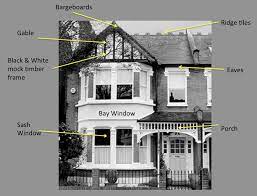How to Determine the Age of a Building:
When it comes to buying, selling, or renovating a building, determining its age is crucial. This information can help you understand the building’s history, potential issues, and overall value. Here’s a few examples on how to determine the age of a building.
1: Check for Historical Records
The first step in determining the age of a building is to check for historical records. This includes researching the building’s original plans, permits, and blueprints. You can start by checking with the local historical society or the city’s planning department. They may have records of the building’s original construction date and any major renovations that have been made over the years.
2: Inspect the Building's Architecture
The architecture of a building can also be a clue to its age. For example, if the building has a gable roof, large chimneys, and a central hallway, it’s likely to be from the 18th or 19th century. If it has a flat roof, metal casement windows, and a more modern layout, it’s likely to be from the 20th century.

3: Look at the Building's Materials
The materials used in a building’s construction can also provide clues to its age. For example, brick buildings built before the 1920s were typically made with handmade bricks. After the 1920s, bricks were machine-made, so the building would be newer. Similarly, if a building has steel framing, it’s likely to be from the 20th century.
4: Assess the Building's Condition
The condition of a building can also provide clues to its age. For example, if a building has a lot of wear and tear, it’s likely to be older. Conversely, if a building is in good condition, it’s likely to be newer.
5: Hire a Professional to Determine the Age of a Building
If all else fails, hire a professional. A building inspector or architect can help you determine the age of a building by looking at the building’s structure, materials, and overall condition. They can also provide you with a detailed report of their findings.
In conclusion, determining the age of a building can be a bit of a challenge, but with a bit of research, inspection, and the help of a professional, you can get a good idea of the building’s age. This information can help you understand the building’s history, potential issues, and overall value. By following the steps outlined in this guide, you’ll be able to determine the age of a building with confidence.

